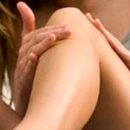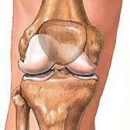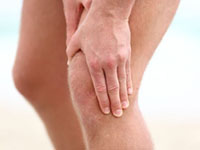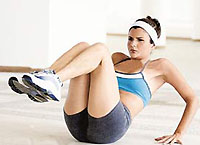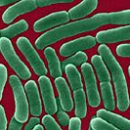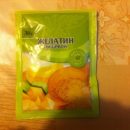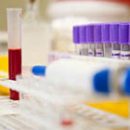Juvenile (Children) Dermatomiositis - a rather dangerous disease. - In rare cases, it can cause the death of a small patient. How to recognize cunning ailment? Read the multiple symptoms of juvenile dermatomyositis in this article.
Content
Juvenile (children) Dermatomiositis - a disease from a group of diffuse diseases of the connective tissue with a predominant lesion of the proximal skeletal muscles, the development of muscle weakness, as well as purple erythema on the skin.
In children, dermatomyomyomy is more likely to be acute or subacted, in the debut of the disease, fever, weakness, ailments, a decrease in body weight, Malgia, arthralgia, a progressive reduction in muscle strength occur.
The clinical picture of dermatomyositis is usually polysindroma, but the most characteristic of the skin and muscle.
Skin lesions - characteristic sign of dermatomyositis. Skin manifestations of dermatomyositis include erythematous rashes with a lilac case on the face (symptom «Dermatomositis points»), in the area of decollete, over the Metal-Falangie joints of the brushes and above the large joints of the limbs, primarily elbow and knees. In the acute period in patients often celebrate surface necrosis of the skin in place of lesion, and in subsequently, atrophy with depreciation sites. In some patients, redness, peeling and cracking of the skin of the palms are observed («Hand mechanic»).
The defeat of the vessels is especially characteristic of preschool children.
Over the astounded muscles of the limbs and on the face it is often a test or tight edema. Possible development of muscle atrophy.
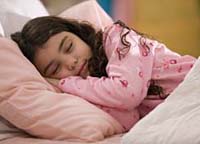 Usually, at the beginning of the disease, patients with dermatomyositis complain about fast fatigue during exercise, pain in the muscles, arising spontaneously and amplifying during palpation and movements. For dermatomyositis, a symmetric lesion is characterized in the first place of the proximal muscles of the limbs, as a result of which children cannot wear a briefcase in their hands, it is difficult for them to raise hands up and hold them in this position, they cannot suit themselves («Symptom calculations»), get dressed («Symptom of shirt»), quickly get tired when walking, often fall, can not climb the stairs, get out of the chair, raise and hold the legs. With a heavy damage to the muscles of the neck and back, patients can not tear the head from the pillow, turn and get out of bed. In the most severe cases, generalized muscle weakness is developing with an emphasis on a proximal group, as a result of which patients can be almost completely immobilized.
Usually, at the beginning of the disease, patients with dermatomyositis complain about fast fatigue during exercise, pain in the muscles, arising spontaneously and amplifying during palpation and movements. For dermatomyositis, a symmetric lesion is characterized in the first place of the proximal muscles of the limbs, as a result of which children cannot wear a briefcase in their hands, it is difficult for them to raise hands up and hold them in this position, they cannot suit themselves («Symptom calculations»), get dressed («Symptom of shirt»), quickly get tired when walking, often fall, can not climb the stairs, get out of the chair, raise and hold the legs. With a heavy damage to the muscles of the neck and back, patients can not tear the head from the pillow, turn and get out of bed. In the most severe cases, generalized muscle weakness is developing with an emphasis on a proximal group, as a result of which patients can be almost completely immobilized.
With damage to the muscles of the larynx and the pharynx, the voices and fucking voice appear, as well as a swallowing, which can lead to aspiration of food and saliva. Under the defeat of the Mimic muscles, the maskness of the face is noted, with the defeat of the glasses. Heavy lesions of the diaphragm and interrochemical muscles lead to a breakdown. In the outcome of the polymositis develops muscle hypotrophy.
In children, in contrast to adults, persistent, sometimes painful tendonous muscular contractures are often formed, abruptly limiting the volume of movements.
The defeat of the joints is observed more than 75% of patients. Arthralgia or polyarthritis develop. The most often amazed small joints of the brushes (mostly proximal interphalangeal), knee and elbow. Articular changes are characterized by moderate defiguration and sickness during palpation and movements. In most cases, the articular syndrome is quickly fastened against the background of treatment, only 25% of patients note the formation of contractures, deformations and subways in interphalating joints with some restriction of functionality.
Calcine during dermatomyositis in children occurs 3-4 times more often than in adults. It develops by almost 40% of patients mainly on time from 1 to 5 years after the start of the disease. Calcinates can be limited in the form of individual foci or plates and localized subcutaneously or in connective tissue around muscle fibers, they can also be located in the zones of the greatest trauma - around the knee or elbow joints, along the Achilles of the tendon, on the hips, buttocks, shoulders. In patients with a dermatomyositis of continuous-recurrent flow, calcine usually has a diffuse character.
During the dermatomyositis, myocarditis is most often developing, manifests predominantly disorders of rhythm and conduction, decrease in the contractile ability of the heart muscle. In 25% of patients developing pericarditis with non-letters with pronounced signs, quickly disappearing after the start of treatment.
Light lesion manifests itself an unproductive cough, shortness of breath, non-permanent wheezes. Often, children find pleuris.
The forecast for juvenile dermatomyositis is less favorable than with dermatomyositis in adults. Female outcomes are noted primarily in the first years after the start of the disease against the background of the high activity of the process and the critical flow. The survival of patients 5 years after the diagnosis is on average more than 90%. With the early diagnosis and active long-term treatment, most patients are able to achieve long-term remission for many years. The worst forecast is observed in children sick at an early age, as well as patients with severe damage to the gastrointestinal tract and lungs.

